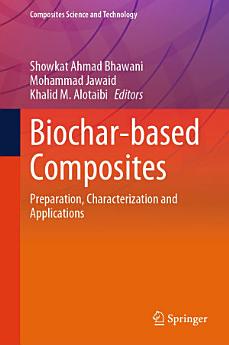Biochar-based Composites: Preparation, Characterization and Applications
આ ઇ-પુસ્તક વિશે
લેખક વિશે
Dr. Showkat Ahmad Bhawani is presently working as Associate Professor at Department of Chemistry, Faculty of Resource Science and Technology, UNIMAS Malaysia. In addition to this, he has a teaching experience of two years from King Abdul Aziz University-North Jeddah and a post-doctoral experience of three years from the Universiti Sains Malaysia, Malaysia. He has received his M.Sc. in analytical chemistry and Ph.D. in applied analytical chemistry from Aligarh Muslim University, Aligarh, India. He is working on the synthesis of molecular Imprinting polymers for the removal/extraction of dyes, fungicides and various natural products from environmental and biological samples. In addition to this, he is also working on the development of new test methods and determining standard conditions for analysis (Separation, Isolation and Determination) of various analytes from environmental and biological samples. He is involved in the analysis of samples like: surfactants, amino acids, drugs, vitamins, sugars and metal ions.
Dr. Mohammad Jawaid is currently working as Distinguished Professor at Chemical and Petroleum Engineering Department, United Arab Emirates University, UAE. Earlier he worked as Senior Fellow (Professor) at Biocomposite Technology Laboratory, Institute of Tropical Forestry and Forest Products (INTROP), Universiti Putra Malaysia (UPM), Malaysia, and also has been Visiting Professor at the Department of Chemical Engineering, College of Engineering, King Saud University, Riyadh, Saudi Arabia since June 2013. He also worked as Distinguish Visiting Professor at Malaysia Japan International Institute of Technology (MJIIT)—Universiti Teknologi Malaysia (UTM), Kuala Lumpur, Malaysia. He has more than 25 years of experience in teaching, research, and industries. His area of research interests includes hybrid composites, lignocellulosic reinforced/filled polymer composites, advance materials: graphene/nanoclay/fire retardant, modification and treatment of lignocellulosic fibers and solid wood, biopolymers and biopolymers for packaging applications, nanocomposites and nanocellulose fibers, and polymer blends.
Dr. Khalid M. Alotaibi is currently working as Associate Professor at Chemistry Department, King Saud University, Riyadh, Saudi Arabia. He is also holding position of Deputy Dean for Research Affairs at King Abdullah Institute for Nanotechnology. He has completed his bachelor degree in chemistry from King Saud University, Riyadh, Saudi Arabia, in 2007. In 2010, he has completed his master degree in analytical chemistry from University of Loughborough, UK. He received his Ph.D. degree in nanotechnology from the University of Strathclyde, UK, in 2015. His research interests are designing and developing novel materials at the nanoscale level for on-demand application technologies, mainly those that can address current problems in the field of health care, environment, and energy.





